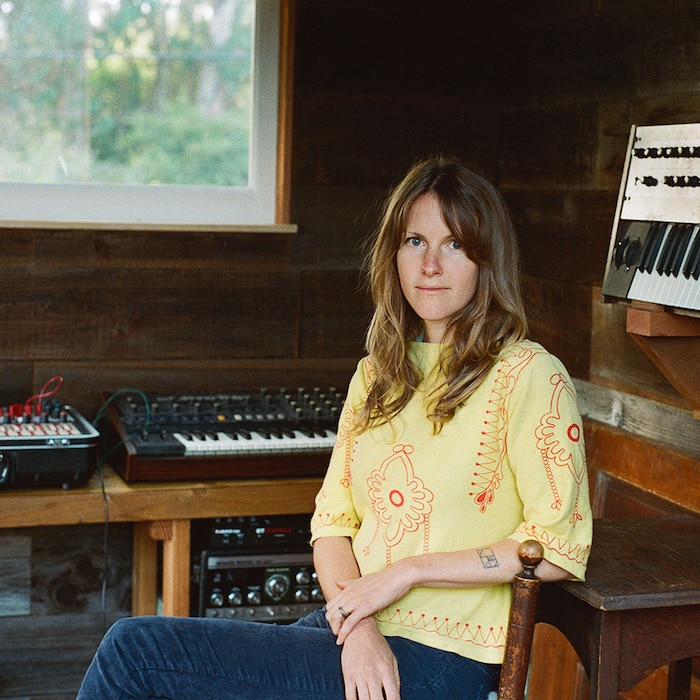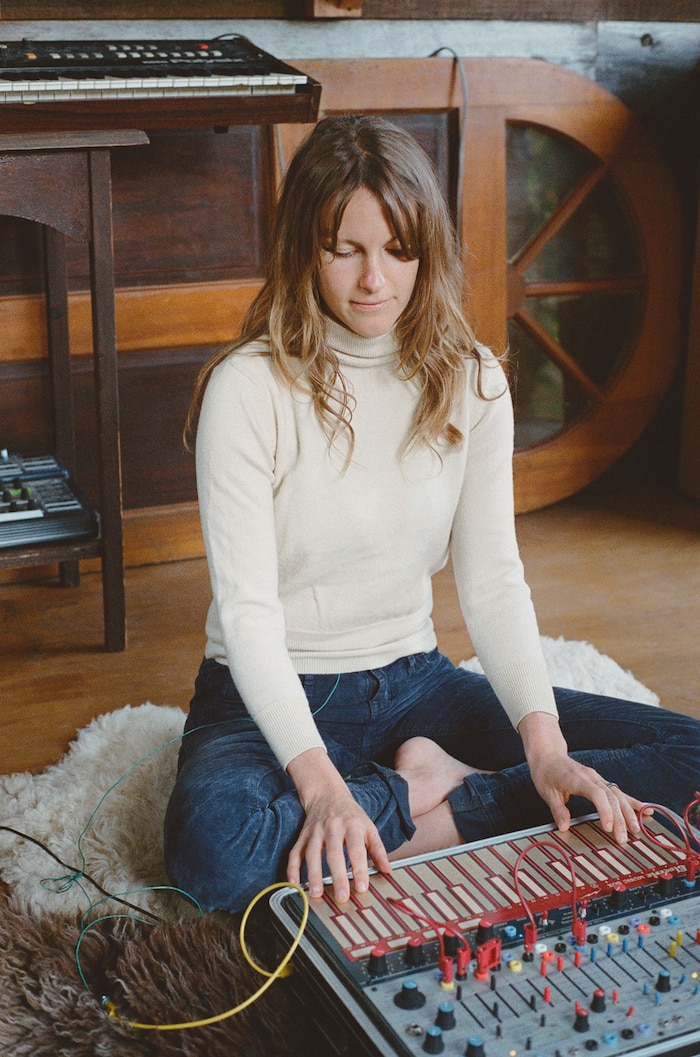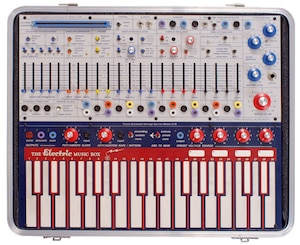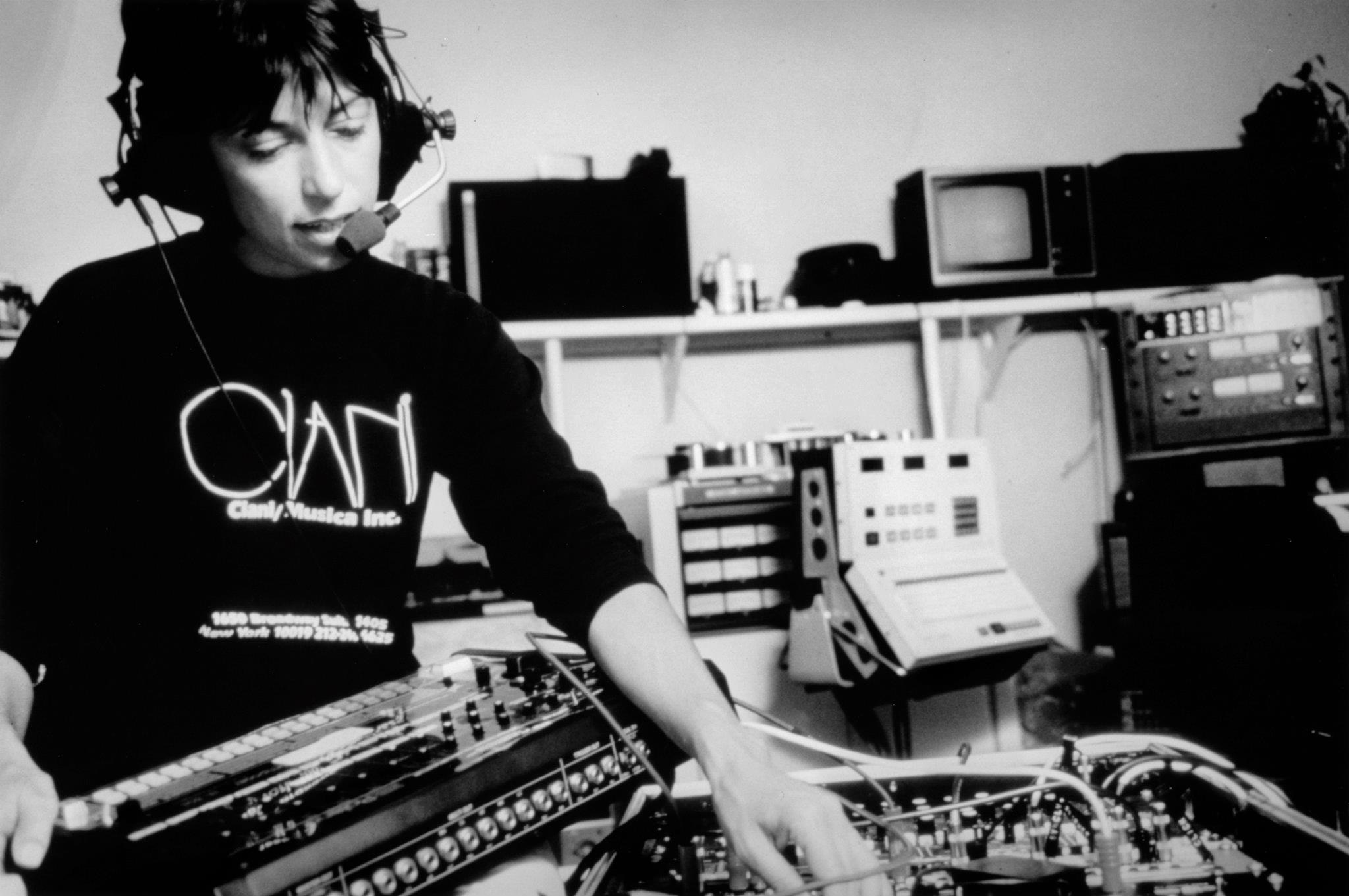Interview: Kaitlyn Aurelia Smith, Buchla Master
Vivian Host chats with the synth wizard about the process behind her otherworldly music

Kaitlyn Aurelia Smith came of age on Orcas Island in northwestern Washington State, and traces of its natural beauty and innate serenity are certainly detectable in her delicately crafted electronic music. Eventually she left Orcas Island to attend the esteemed Berklee College of Music in Boston, where she studied composition and sound engineering.
Smith initially focused on her voice as her primary instrument, and later switched to classical guitar and piano, but it was upon returning to Orcas – where a neighbor lent her a Buchla 100 modular synthesizer – that she found her true calling. Although she had previously honed her chops in indie-folk outfit Ever Isles, her solo explorations charted a new path, bringing to mind the work of synth pioneers like Suzanne Ciani, Laurie Spiegel, Oskar Sala and Terry Riley, while also folding in tender, playful rhythms and airy pop tendrils.
Following several self-released offerings, Smith linked up with Western Vinyl in 2015 for her first official album, Euclid, so named because its first six tracks were structured using Euclidian geometry. That same year, she also contributed to a cassette release on the RVNG label, re-interpreting music from ’70s cosmic folk auteur Bobby Brown. In this excerpt from her recent interview with Vivian Host for RBMA Radio, Smith talks about her compositional approach, the importance of oscillators, and ghosts in the machine.
I’m always composing to a visual in my head.
Tell me a little bit about where you grew up.
I grew up on Orcas Island in Washington. It’s a really beautiful island. There are about 10,000 people there. There are a lot of retired artists who moved to Orcas Island and brought up their kids there. The education system is amazing because it involves such a vast outdoor experience and a lot of mentorships. There’s a lot of community facilities that are open to kids that are free, like a woodshop where you have a master woodcarver there to teach you for free. There’s a lot of artists willing to mentor you. I grew up in a valley, and my parents had a chapel that my mom ran. There was a piano in there, and I would play music in there all the time.
You started on piano... Is that what made you want to go to school for composition?
Yeah. I did home schooling and when I was 16 I got a job working for a film composer who taught me Pro Tools. So I started creating little experiments, themes for visuals. That’s been something that is true throughout all of my composition work. I’m always composing to a visual in my head.
What sorts of visuals do you see when you’re making your music?
I go about composition in two different ways. One is inductive and one is deductive. Sometimes I’ll start just seeing colors and then it becomes a feedback loop between what I’m making and what I’m seeing. Like, “Oh, if I open the timbre on this then it’s a shape created in this color.” And then that starts to turn into a story in my brain.
Another way I’ll compose is by seeing a visual that’s really inspiring to me, like a landscape. I’ve grown up in the natural world and live in nature now, so I feel inspired by that and want to create sound for it. Visuals have really been a way for me to get out of a creative rut – it just gives me form and limits to be free.
I was really grateful to have the time to really focus on listening to two notes for basically a whole year and how they can change each other.
How did you get introduced to the Buchla?
After college I moved back to Orcas Island and I was helping my neighbor set up his studio. He asked me what composers I was inspired by; at the time, Terry Riley was a huge influence of mine. He got very excited and told me that he used to teach electronic music at NYU and he took me to his storage room where he had a massive Buchla collection. I had no idea what it was, but I was just blown away. I felt like I was in a spaceship and was getting ready to handle a control panel. He said that I could borrow a Buchla 100 for a year and just explore with it and see if I liked it. I took it back to my cabin and every day I would turn it on and make a new patch and figure out what it does.
That Buchla 100 was a very limited modular system with 12 modules and no sequencer or keyboard. It was really amazing. It taught me how to actually listen to music because it only had two oscillators. I would just turn them on and hear how they pulsed against each other. It taught me what two notes can do over a long period of time if you just leave them. It’s very similar to when you have a guitar and you’re tuning the harmonics and hearing the oscillation. It made my ears very sensitive to tuning. That’s been something that I was really grateful to have – the time to really focus on listening to two notes for basically a whole year and how they can change each other.
Did you know many composers working in electronic music before that?
No. Actually, Laurie Spiegel was one of the first composers that I heard making electronic music. Around the time that I got the Buchla, I didn’t know anything about the electronic music world, so I started researching. I was especially was interested in females because a lot of the males that I was hearing were making very different music than what I was interested in making. Suzanne Ciani and Laurie Spiegel were the first females that I heard. The thing that set them apart was that they were both making tonal music, and that was what I’ve always wanted to make.
There’s also a lot of men that are making music that I find very inspiring, but a lot of the music that I first found in the electronic music world from men was more like outer space sounds and bleeps and blops... which I love, but I was really interested in combining those sound effects with tonal music.
You mentioned Terry Riley before. Do you have any favorite works of his?
My favorite Terry Riley piece – which is probably everyone’s favorite – is A Rainbow in Curved Air. What I really like about his music is the sense of comfort and novelty. It’s not something that’ll get stuck in your head. It’s something you can listen to over and over again and it’ll feel new because there’s just so much information. Nothing really gets repeated over and over again. That’s something that I personally like to listen to. Another artist that I listen to endlessly is Laraaji.
Have you tried playing other synths? Do you know why the character of the Buchla appeals to you more than something else would?
Yeah. I’ve played a gazillion synths now and I like them all. I mean, they all have different characters. But I’m most drawn to the Buchla for a few reasons. I really like the way that I’m able to interface with it. It is a very different language than other synths, but it feels like an extension of myself now where I can play it from muscle memory. The tones are just very familiar and my ear is hyper sensitive to it. It also keeps you on your toes more so than other synths that I’ve played, mostly because it has pretty big tuning problems. You have to constantly be tuning it, and keeping a percentage of your ear always ready to tune it on the fly. I have to tune during a live set probably four or five times. I like that because it keeps me engaged. But I like a lot of other synths too.


There’s not that many people that play the Buchla.
There’s really not, because there’s not that many of [the machine]. I mean, there’s the Music Easel, which I play live. That’s the accessible one now because BEMI remade a version of it about three years ago, but otherwise you have to go to the National Music Centre in Canada or EMS in Stockholm and do residencies in order to have access to a larger system… or you’re one of those people who own one, which is awesome. They also break a lot and there’s only like two people that I know of that repair the older ones. There’s probably a lot of people making music on the 200E now, which is a contemporary model.
Let’s talk a little bit about the making of your most recent record, Euclid.
It’s my first album where I’m combining vocals and synthesis. It was fun to make. There were a few pieces where, basically, every day I would wake up and I would go through YouTube footage until I found something inspiring and then I would edit together my version of that person’s footage and compose a two-minute piece to it. Then there were six songs that were really just me experimenting with vocal processing. I wanted to create really happy music for that album.
What was some of the footage that was inspiring you?
I have them all up on my website. One of my favorites was one of a guy’s hang gliding experience in New Zealand in the 1970s. All of them have an older film quality because it just looks cooler. Another one I really liked was of Indian gymnastics.
Do you always have a process in mind before you make a piece of music?
When I compose it goes through a lot of different stages. I have kind of a daily journal. It feels like a musical throwup session, where I’m not trying to create something and I’m just improvising for a certain amount of time so that it feels like I’m keeping that gate open. Sometimes from that there’ll be little melodic things that come out where I’m like, “Oh I like that,” or I’ll find a new patch that is really inspiring. Then I’ll start to get intentional after something feels like a good idea.
The first six songs on Euclid, though, were an experiment in creating music for a geometrical shape. At the time, I wanted to create really happy-sounding music and also build up my tool set of different strategies for writing on the spot. I want to be a film composer so I want to figure out different tools for basically never having a creative block.
Composing for a 3D shape was something I learned in a class at the San Francisco Music Conservatory. Basically, you pick any shape – like a notepad for instance – and you decide to assign notes to points on the shape. So the top left corner is an A, the top right corner is an F, the bottom lower left is a C, the bottom lower right is a D. Once you have those four notes that you want to work with, you decide the line connecting the C to the D is going to be a quarter note, the line connecting the A to the F is going to be a 16th note, and then you basically figure out what it would sound like for that A to go to the D with those elements.
Do you have any big music influences that aren’t from the classical or electronic realm?
My all-time favorite musician is D’Angelo. I’ve always loved his sense of harmony. I’ve broken his songs down a lot, transcribed them and learned a lot.
You also used to make folk music.
Yes. It was me solo under the name Ever Isles. I made the album on Orcas Island with my friend Jeremy Harris and then I performed for a while, played some shows with Iron & Wine.
How was the experience of touring in a folk project different than the experience of playing synths live?
Very different. The guitar is very predictable. You can almost always count on it. I mean, of course you can break a string or it goes out of tune, but with electronic music I feel like I’m always super stressed out the night before, the moments before the show and during the show from all the things that could go wrong. I’m constantly trying to figure out back-ups. I have suitcases of doubles of things just in case something goes wrong.
Has anything ever gone really wrong?
So many things have gone wrong! I always just give the front of house a stereo output from my interface, so that I’m in control of everything. Sometimes the computer just decides it just wants to skip and glitches out. I’ve also had it where Music Easel decides that it wants to just freak out and do its own thing, especially if there are any grounding issues in the venue. I’ve had my vocal effects just turn off randomly. There are electrical ghosts all the time.

